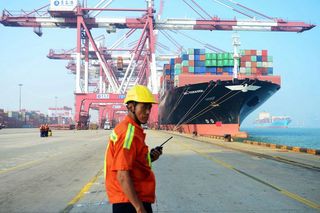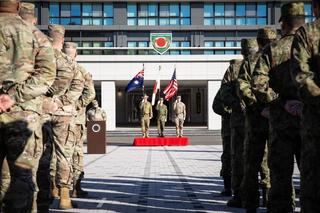Having ruled himself out of the party leadership election next month, and so consequently tendering his resignation as Japan’s prime minister, international praise has been quick to flow for Fumio Kishida.
US President Joe Biden lauded Kishida’s leadership for Japan and on the world stage. Australia’s Anthony Albanese described him as a “friend,” the first leader to host the Australian prime minister in the days after taking government. Other allies and close partners have done similarly, a sentiment that is bound to continue for Kishida’s remaining month in the job before the ruling Liberal Democratic Party (LDP) elect a new leader in September.
Perhaps the most consequential relationship that Kishida has forged over his almost three years in the job has been with neighbouring South Korean President Yoon Suk-yeol. The shuttle diplomacy between the two men has transformed bilateral ties after nearly a century of deep and sometimes dangerous antipathy.
Australian political and diplomatic envoys have enjoyed close contact with Kishida throughout his political career. A prominent theme in accounts from those who know him best is that Kishida has put Japan on a new, engaged and effective international footing.
Overlapping Kishida’s personal rise through the political ranks, including as foreign minister from 2012 until 2017, Japan has worked tirelessly with Australia, the Association of Southeast Asian Nations, and the United States to build the interconnected regional architecture.
While historic enmity between Tokyo and Beijing, and more recent Washington-Beijing strategic competition, has prevented formal treaty-based structures emerging in Australia’s region, Kishida and his predecessors understood the long-term value of deep, iterative and inter-meshing economic and security interests, generated by ASEAN-centred forums such as APEC and the East Asia Summit.
Kishida was active during the decades that Australia and the United States built a web of trilaterals and minilaterals – including the Australia-Japan-US Trilateral Strategic Dialogue begun in the early 2000s, the elevation of the G20 leaders’ meetings, and the formation of the “Quad” between Australia, India, Japan and the United States, which was proposed in formal dialogues by Kishida’s then-boss, the late Shinzo Abe in 2007.
And Kishida has played a leading role in the formation of both the “Indo-Pacific Four” (IP4) dialogue with NATO and the emerging Trilateral Security Cooperation Framework with the United States and South Korea.
Spurred by significant geopolitical realignments among old foes Russia and North Korea, and allies’ difficulty interpreting China’s response, commentary has centred on what impact a Trump administration could have on this emerging three-way pact between Japan, South Korea and the United States. South Korean Defence Minister Shin Won-sik’s sense of urgency in bedding the arrangement can also be read as caution that leadership changes in any one of the three nations could scuttle this nascent deal – a position likely to be held by his successor, who will continue to pursue it.
Will Kishida’s departure jeopardise this three-way pact, and with that, Australia’s interests?
There are good reasons to remain optimistic. The LDP has enjoyed near-constant political dominance in the Japanese parliament for 70 years and controls both chambers of the National Diet (parliament). The revolving door of prime ministers in Japan – and Australia – in recent decades has provided endless fodder for the commentariat. But undue focus on personal connections, as reassuring as they can be in the heat and turmoil of foreign relations, is misleading.
Equally misleading is over-interpretation of the Japanese, Australian and other parliamentary party governing systems, which can dump sitting leaders because of a sudden slump in voter polling.
South Korean media can be likewise hypersensitive to Japanese political changes, and misapprehensions can be expected until the LDP anoints a new leader. The English-language Korea JoongAng Daily has usefully pointed to the fact that leadership changes in Japan’s political system – unlike a presidential system – do not automatically herald policy upheaval. But it has explained the special, and atypical, relationship that Kishida had with Yoon, and the danger that the Japan-South Korea-US response to a renewed Putin-Kim alliance and North Korean nuclear threat could “fall into limbo”.
With potential LDP leader candidates ranging from aging party veterans to youthful cabinet member Shinjiro Koizumi, son of a former prime minister, there is as yet no certainty about who will fill Kishida’s shoes.
His successor will face the same Japanese national economic difficulties that Kishida tried to mitigate, and probably continue his unsuccessful efforts to reform a troubled LDP. These were among the issues not of his own making, but enough to generate one poll showing an approval rating of 15.5 per cent in July.
Until and unless a radically different LDP candidate emerges – not so likely in the conservative culture of the LDP – it is safe to assume that the effective and pragmatic policy trajectory established by Kishida over his political lifetime will continue. His successor will have to work hard, though, against entrenched LDP positions to ensure Japan-Korea relations remain on track to deliver outcomes that enhance regional stability.
Canberra’s interests in shaping its region through slow and sure diplomacy, while being sufficiently agile to focus on new types of challenges and sustainably engage with partners equal to the task, will be mirrored in Tokyo.









